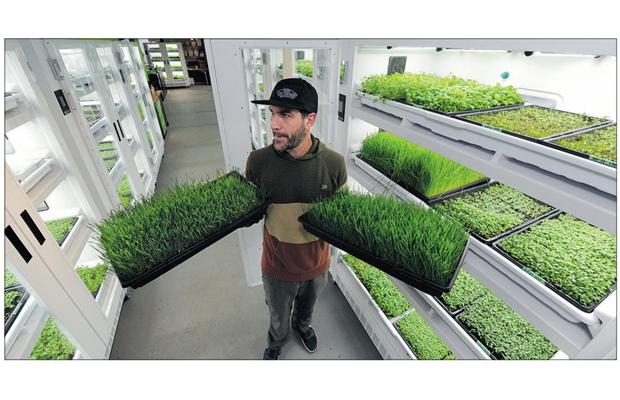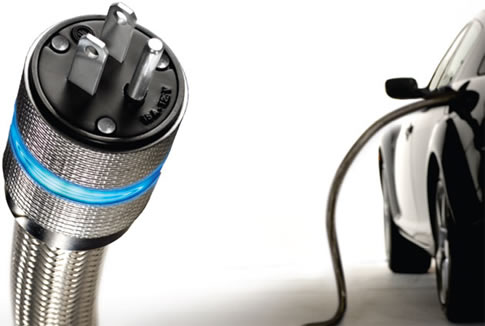
Owner Tarren Wolfe with his cultivation units at Living Produce Aisle in Gastown. Source: Vancouver Sun.
On Saturday, a new produce store opened its doors in Gastown (Wood). Living Produce Aisle provides customers with herbs, sprouts, and micro-greens, which are all grown in-store. In one month, they can grow between 1000 and 2000 pounds of produce, in 20 cultivators. It also has a café which sells salads and smoothies (Shore).
While grocery stores have the advantage of selling herbs, sprouts and micro-greens conveniently in the same location as most other food products that customers need on a regular basis, Living Produce Aisle has a number of points of difference that will attract a lot of customers in the coming months. An original idea like this appeals to health-conscious consumers, customers who are mindful of the environmental impact of transporting produce from far away, and for chefs who are looking for a source of fresh greens. Greens sold in grocery stores are usually limp by the time they reach the shelves, since they are usually imported in the winter months. Living Produce Aisle, on the other hand, takes “locally grown” to a whole new level: it is able to provide fresh greens to customers 12 months a year, without having to travel any distance at all. In addition, the produce can be cut to the consumer’s specifications, allowing purchases to be customized (Shore).
Living Produce Aisle is expecting to bring in approximately $50,000/month, and this can be credited to their unique idea and active brand positioning.
Works Cited
Shore, Randy. “Bright idea transforms basement into greens farm.” The Vancouver Sun 3 October 2012: A1, A3. Print.
Wood, Amy. “Get Über-fresh Greens from Urban Cultivator and the Living Produce Aisle.” Alive. Alive Publishing Group Inc., 5 October 2012. Web. 6 October 2012.

